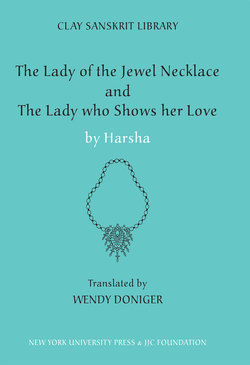Читать книгу The Lady of the Jewel Necklace & The Lady who Shows her Love - Harsha - Страница 35
На сайте Литреса книга снята с продажи.
Оглавлениеher Love,’ by contrast, is identified by all the characters in the play as a nataka, a major drama.)
Even Levi grudgingly admits that Harsha introduced into the inherited plot a number of original touches: the parrot, the disguise of the maid, the king’s playacting, and so forth. It seems to me (and I will argue below) that he also introduced major meditations on self-imitation and artistic representation. The two plays together constitute a kind of variorum edition of the tale with its variants, or, to change the metaphor, a Bach fugue: they go along together for a while on the same path, with the same characters sometimes saying a line that you recognize from the other play, then they part for a while, then meet and part again.
Was the audience in on it from the start, because they knew the story from the earlier sources? Or is it like a murder mystery in which we’re in suspense—What was the seer’s prediction? Why is Sagarika in disguise?—until Yau- gandharayana explains it all at the end? I think the former situation is far more likely than the latter. James Thurber (1942) wrote a satirical essay called ‘The Macbeth Murder Mystery,’ in which he imagines a woman who doesn’t know the plot of Shakespeare’s ‘Macbeth’ but is addicted to murder mysteries, seeing the play for the first time and wondering all through who did it. We would be just as foolish as she was, if we were to assume that Harsha’s audiences expected a surprise. The story of Udayana and Vasava·datta was already a myth in Harsha’s day, and originality is not an essential ingredient of a good myth. The voice of myth is predictable, one that the storyteller knows and the audience expects. The audience has an expectation of what the story _________________
